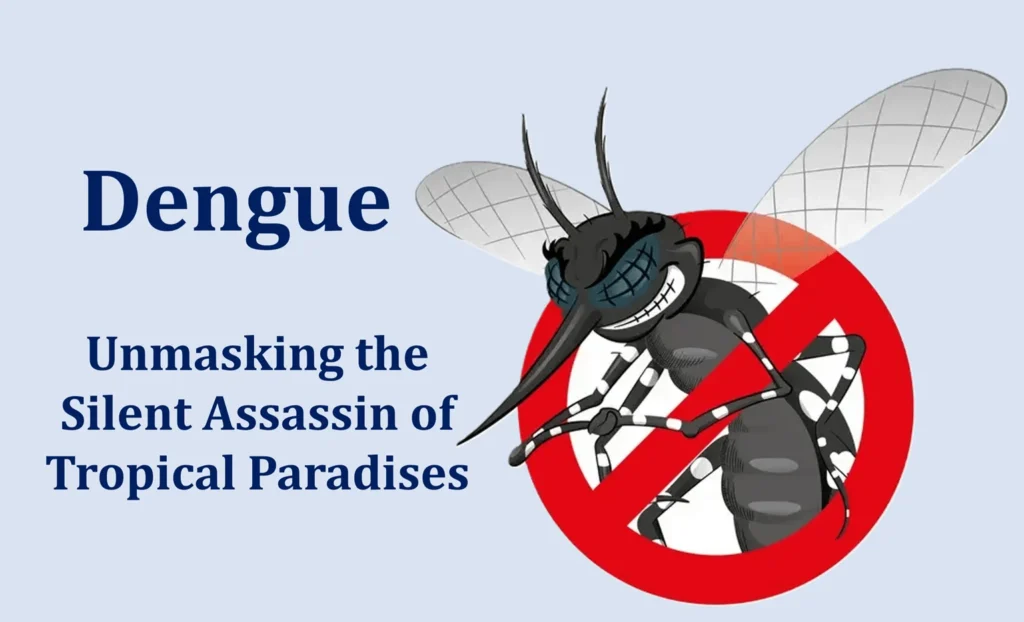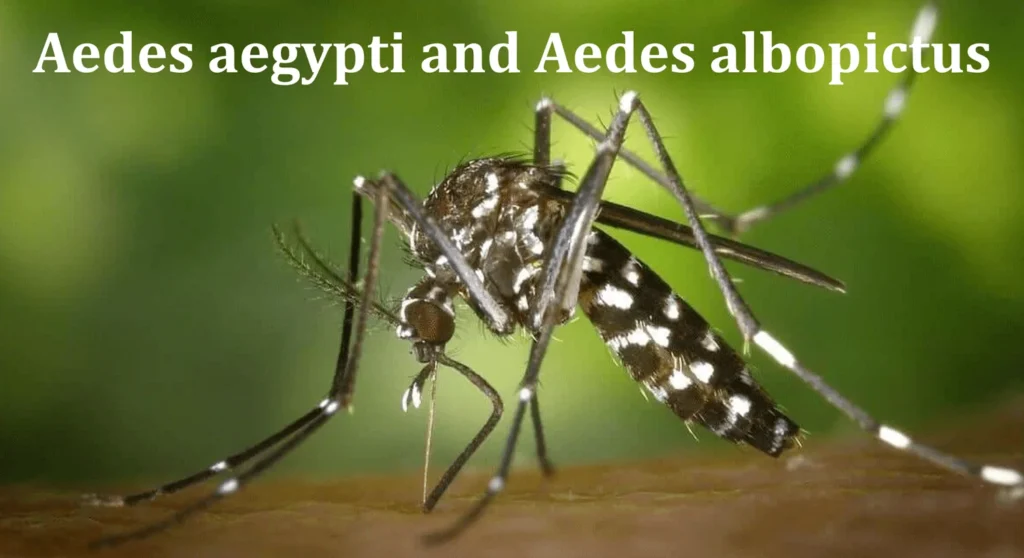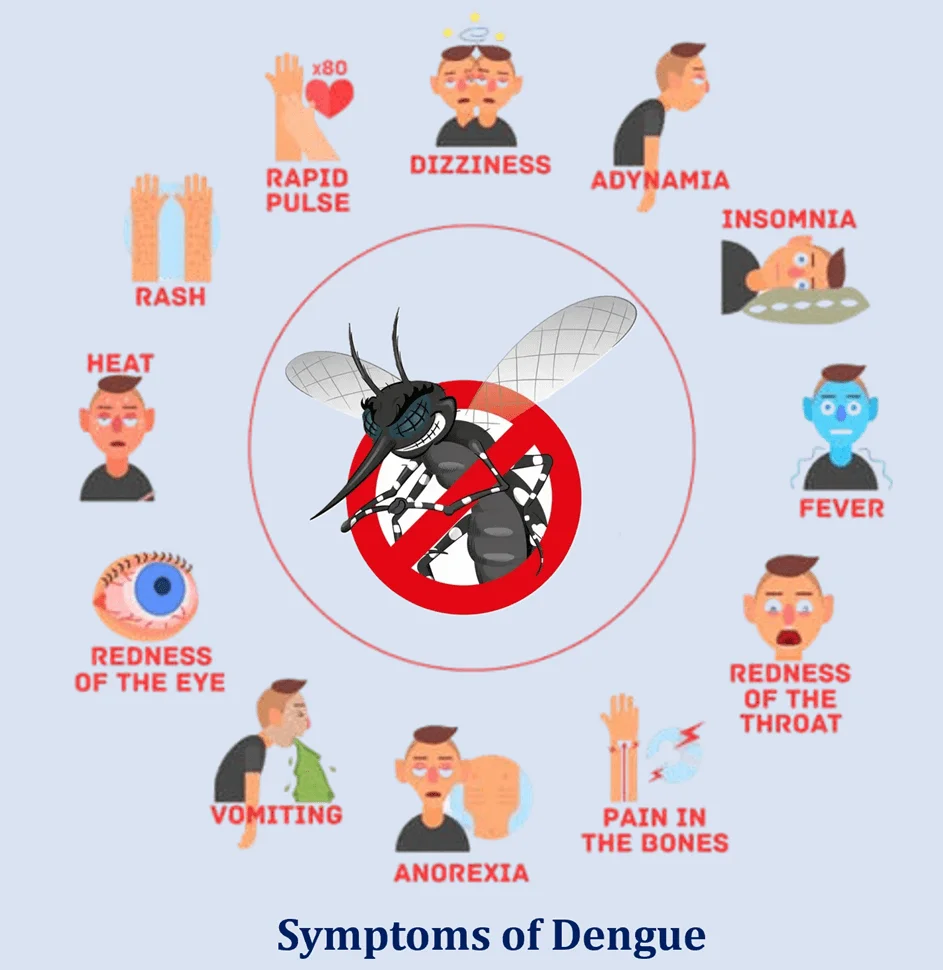
Imagine yourself on a once-in-a-lifetime trip where you can explore the fascinating streets of a far-off tropical location, acquaint yourself with its vivid culture, and enjoy the sun on unspoiled beaches. A little, nearly imperceptible hazard that may convert your ideal holiday into a nightmare is the last thing on your thoughts. Dengue is a mosquito-borne illness that frequently goes undiagnosed despite the charm of tropical paradises. We’ll go further into the world of dengue in this in-depth blog post, covering its causes, transmission, symptoms, treatment, prevention, and wider ramifications as a worldwide health concern.
The Ancient Origins of Dengue
Dengue fever, also ominously called “Breakbone Fever,” has a lengthy history. It is considered that the Aedes mosquito species first originated in the tropical regions of Africa, where it thrived, particularly Aedes aegypti. It eventually expanded to the Americas after initially originating in Asia and the Pacific Islands. The prevalence of this pernicious disease expanded along with globalization and the rise in worldwide travel; it now kills millions of people every year.
The Culprits Behind Dengue
Dengue Virus belongs to the virus family called Flavivirus. It causes Dengue and some other diseases such as Zika, Yellow Fever and West Nile Virus. The main carriers, or the animals that carry and spread Dengue, are female mosquitoes called Aedes mosquitoes. It is spread by two species of mosquito called Aedes aegypti and being Aedes albopictus. Their body have black and white color stripes which gives them the name of “Tiger Mosquitoes” It’s their tiny, silent bites that can inject the Dengue virus into your bloodstream, setting the stage for infection.

Four Serotypes of Dengue
It isn’t just one virus: it’s a complex family of four distinct serotypes. These serotypes share similarities but have unique genetic differences. Exposure to one serotype confers immunity to that specific strain, but a second infection with a different serotype can trigger a severe form of Dengue called Dengue Hemorrhagic Fever (DHF) or Dengue Shock Syndrome (DSS). This phenomenon, known as antibody-dependent enhancement (ADE), poses a significant challenge in developing effective vaccines and treatments for Dengue. The four distinct serotypes, each of which can cause Dengue Fever:
1. DENV-1: The first serotype to be identified, DENV-1 is one of the most widespread and can cause both mild and severe forms of dengue. Infection with DENV-1 provides immunity against itself but not against the other serotypes.
2. DENV-2: Known for causing large outbreaks and severe disease, DENV-2 has been associated with severe dengue (Dengue Hemorrhagic Fever and Dengue Shock Syndrome). This serotype has demonstrated higher virulence in some studies.
3. DENV-3: This serotype has been involved in numerous major epidemics worldwide. DENV-3 can cause severe disease and is noted for its ability to spread rapidly in new areas, sometimes leading to severe outbreaks.
4. DENV-4: Though less commonly reported in comparison to the other serotypes, DENV-4 can still cause severe disease. Like the other serotypes, infection with DENV-4 provides long-term immunity to itself but not to the others.
Recognizing the Symptoms
One of the insidious aspects of it is its often-subtle onset. Symptoms usually begin 4-10 days after being bitten by an infected mosquito. Early signs of Dengue include:

- High Fever: Sudden and severe.
- Severe Headache: Often described as a ‘splitting’ headache.
- Joint and Muscle Pain: Earning it the nickname “Breakbone Fever.”
- Rash: A widespread rash that may appear a few days after the fever.
- Mild Bleeding: Symptoms like nosebleeds, gum bleeding, or easy bruising.
Even though its symptoms might look like the flu or a regular viral illness, it’s essential not to underestimate it. Without the right medical help, it can get worse, causing things like internal bleeding, problems with your organs, and in some situations, even death.
The Crucial Role of Early Diagnosis
Diagnosing it can be challenging due to its similarities to other viral illnesses. A definitive diagnosis often involves blood tests to detect the virus or specific antibodies. Early detection is essential for effective treatment and preventing complications. If you’re in a Dengue-endemic area and experience symptoms, seek medical attention promptly.
The Spectrum of Dengue
Dengue should not be taken lightly as its symptoms varies from patient to patient. I am mentioning the three common conditions of dengue.
- Dengue fever: It is characterized by a high temperature, headache and pains in joints and muscles. Sometimes rashes might also appear. One shouldn’t ignore it even though it won’t cause death of the patient.
- Dengue Hemorrhagic Fever (DHF): It is one of the worst conditions of dengue where the patient may come across decrease in platelet count, bleeding and organ damage.
- Dengue Shock Syndrome (DSS): This is the worst stage. It makes you bleed a lot, feel shocked, and messes up your organs.
Remember, it’s crucial to visit a doctor if you suspect you have dengue, especially if your symptoms worsen.
Treatment and Management
At the moment, it is not specifically treated with antivirals. Relief of symptoms, preserving fluid balance, and supportive care are the major goals of management. Hospitalization is often necessary for severe cases, especially those progressing to DHF or DSS. Research into antiviral drugs and its vaccines is ongoing, but no universal vaccine has been developed yet.
Prevention Is the Best Medicine
You might have heard of the proverb “Prevention is better than cure”, this is what fits appropriately in case of dengue. So, let’s look at some of these preventions.
- Clean Surrounding Environment: Eliminate breeding sites for mosquitoes by emptying containers that gather standing water. Use mosquito nets and insect repellents with DEET or picaridin to prevent bites.
- Vaccination: Some countries have approved its vaccines, so check if it’s available in your area or destination.
- Protective Clothing: Wear long sleeves and pants, especially during peak mosquito activity times (dawn and dusk).
- Community Efforts: Encourage local authorities to implement mosquito control programs in high-risk areas.
Travel and Dengue
As travelers, it’s crucial to be informed about it and take preventive measures when visiting regions where the disease is endemic. Before your journey, research your destination’s risk level for its transmission. Consider getting vaccinated if available, and always pack mosquito repellent, long-sleeved clothing, and bed nets. Stay in air-conditioned or well-screened accommodations when possible and remain vigilant about mosquito exposure.
The Broader Implications of Dengue
Dengue isn’t just a health issue; it has far-reaching economic and social implications. The burden of it falls disproportionately on lower-income communities in endemic regions, affecting livelihoods and straining healthcare systems. Furthermore, the rise in its cases can impact tourism, a significant source of income for many tropical destinations.
Conclusion
Dengue may be a hidden threat lurking in the shadows of paradise, but knowledge and vigilance can empower us to protect ourselves and the communities we visit. By understanding the origins, transmission, symptoms, and preventive measures, we can minimize the risk and impact of it. So as travelers or residents of tropical belt, our responsibility includes safeguarding ourselves and the destinations we cherish.
